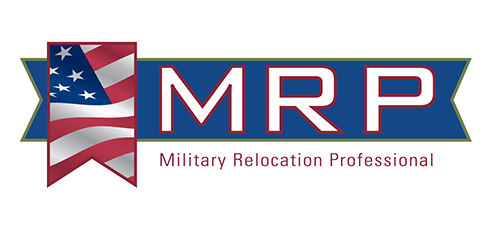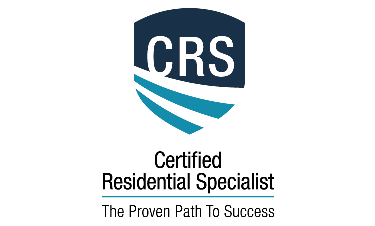
Decoding Your PCS Orders: A Comprehensive Guide
Receiving your Permanent Change of Station (PCS) orders is a pivotal moment in any military career. It signals a new chapter, a fresh start, and, let’s be honest, a whirlwind of logistics. However, those orders can look like a cryptic document filled with abbreviations and codes. Fear not! This comprehensive guide will break down your PCS orders, step by step, ensuring you understand every detail and can navigate your move with confidence. We’ll delve into each section, explore the nuances of entitlements, and offer practical advice to make your PCS as smooth as possible.
Understanding the Basics: The Foundation of Your Move
Your PCS orders are the official authorization for your relocation. They’re more than just a piece of paper; they’re the key to unlocking your entitlements, scheduling your move, and ensuring a seamless transition. These orders are crucial for everything from scheduling your move to receiving your pay and allowances. Think of them as the blueprint for your upcoming move.
Key Sections and What They Mean: A Deep Dive
- Order Number and Issuing Authority: The Unique Identifier
- This section identifies the specific order and the authority that issued it. It’s akin to a serial number, allowing for tracking and referencing. Keep this information handy for future reference, especially when contacting transportation offices or administrative personnel. This number is your proof of authorization. Without it, you might face delays or complications in processing your move. Note the specific branch of service that issued the order, and the location of the issuing authority.
- Service Member’s Information: Accuracy is Paramount
- This section confirms your personal details, including your rank, name, and social security number. Double-check for accuracy. Even a minor typo can cause significant delays in processing your paperwork and entitlements. This information links your identity to your move. Errors can lead to incorrect pay, delayed shipments, and even issues with accessing on-base services. Verify the spelling of your name exactly as it appears on your military ID. Check the last four of your social security number.
- New Duty Station and Reporting Date: The Destination and Deadline
- This is the core of your orders. It specifies your new location and the date you are required to report. Pay close attention to the “report no later than” date. This is critical and non-negotiable. Missing your reporting date can have serious consequences, including disciplinary actions. Look for the full address of your new unit, not just the base name. Determine if the report date is a specific time, or just the date itself.
- Type of Move: Deciding Your Transportation Strategy
- This section indicates whether you are authorized a government-contracted move, a Personally Procured Move (PPM/DITY), or a combination of both. There are advantages and disadvantages to both options. Government-Contracted Move: The military handles the logistics, but you have less control. PPM/DITY: You manage the move, potentially earning money, but take on more responsibility. Combination: A mix of both, giving you some control while utilizing government resources. Check for limitations on weight, or any restrictions on the type of move authorized.
- Authorized Travel and Transportation: Planning Your Journey
- This section details the authorized travel for you and your dependents, including mileage allowances and modes of transportation. It will clarify if you are authorized to drive, fly, or both. Knowing your authorized travel will help you plan your route, budget for expenses, and ensure compliance with regulations. Pay close attention to mileage limitations, per diem rates, and any restrictions on travel routes.
- Dependents’ Information: Ensuring Family Inclusion
- This section lists the authorized dependents who are included in your move. Ensure all names and dates of birth are correct. Incorrect dependent information can cause issues with benefits and travel. This ensures your family is accounted for in your entitlements and travel arrangements. Verify the full names and birth dates of all dependents, and ensure they match their official identification.
- Entitlements and Allowances: Understanding Your Benefits
- This is where you’ll find information about your Basic Allowance for Housing (BAH), Cost of Living Allowance (COLA), Temporary Lodging Expense (TLE), and other entitlements. Understanding these allowances is vital for budgeting your move. BAH: Varies by location and rank; used for off-base housing. COLA: Compensates for higher living costs in certain areas. TLE: Reimburses for temporary lodging expenses during your move. Research the specific BAH and COLA rates for your new duty station. Understand the limitations and requirements for TLE reimbursement.
- Household Goods (HHG) Shipment: Managing Your Belongings
- This section outlines the weight allowance for your household goods and any special instructions for shipping. Knowing your weight allowance will help you plan your packing and avoid exceeding the limit. Exceeding your weight allowance can result in out-of-pocket expenses. Pay close attention to any restrictions on prohibited items, and understand the process for filing claims for damaged or lost goods.
- Special Instructions and Remarks: The Fine Print
- This section contains any additional information or specific instructions related to your move, such as special medical needs, overseas requirements, or specific reporting instructions. Read this section very carefully. This section can contain crucial details that impact your move. Highlight any unusual instructions, and seek clarification from your administrative office if needed.
- Endorsements: Official Acknowledgement
- This area is where you will sign and date the orders, and where other officials will sign and date to confirm actions taken. These signatures are official acknowledgments of actions taken. Make sure all required signatures are present before proceeding.
Decoding the Abbreviations: A Comprehensive Glossary
Beyond the basics, military moves come with a unique language. Here’s an expanded glossary to help you decipher those cryptic abbreviations:
- PCS: Permanent Change of Station
- TDY: Temporary Duty
- BAH: Basic Allowance for Housing
- COLA: Cost of Living Allowance
- TLE: Temporary Lodging Expense
- TLA: Temporary Lodging Allowance (Specifically for overseas moves)
- PPM/DITY: Personally Procured Move/Do-It-Yourself
- HHG: Household Goods
- JFTR: Joint Federal Travel Regulations (The rulebook for travel entitlements)
- JTR: Joint Travel Regulations (Replaced JFTR)
- POV: Privately Owned Vehicle
- CONUS: Continental United States
- OCONUS: Outside Continental United States
- AOAP: Authorized Origin Address Point
- ADAP: Authorized Destination Address Point
- ITG: In Transit Gratuity
- MALT: Monetary Allowance in Lieu of Transportation
- UTR: Unaccompanied Baggage
- SDO: Staff Duty Officer
Steps to Take After Receiving Your Orders: A Detailed Action Plan
- Read, Review, and Highlight (Multiple Times): Don’t just skim. Read every word, multiple times. Highlight: Reporting date and location, Authorized travel methods, Weight allowances for HHG, Any special instructions. Create a checklist of action items directly from the orders.
- Verify Accuracy and Report Discrepancies Immediately: Compare the information on your orders to your military ID and other official documents. Check: Spelling of names, Social Security Number, Rank and grade, Dependent information. Contact your administrative office immediately to correct any errors. Document the communication.
- Create a Comprehensive PCS Binder (Digital and Physical): Physical Binder: Original PCS orders, Copies of dependent IDs, Vehicle registration and insurance, Household goods inventory, Receipts for all moving-related expenses, Contact information for your new unit and moving company. Digital Binder: Scanned copies of all physical documents, Digital copies of email correspondence, Photos of high value items, Spreadsheet of all expenses. Organize by category, and date.
- Develop a Detailed Timeline (Reverse Planning): Start with your reporting date and work backward. Include: Packing deadlines, Household goods pickup and delivery dates, Travel dates and times, Temporary lodging reservations, Utility transfer dates. Use a digital calendar with reminders.
- Schedule Your Move and Coordinate with Transportation: Contact your transportation office (or moving company for PPM) immediately. Provide: Order number, Desired move dates, Contact information. Confirm all details in writing.
- Inform Key Contacts and Update Records: Notify: Landlord or mortgage company, Utility companies, Post office (for mail forwarding), Banks and credit card companies, Insurance providers, Medical and dental offices, Schools. Update your address in DEERS.
- Start Planning Your Travel and Secure Reservations: Book flights or make hotel reservations well in advance. Plan your route and factor in travel time. Gather all necessary travel documents.
- Contact Your New Unit and Establish Communication: Reach out to your sponsor or the unit’s staff duty officer (SDO). Request: Welcome packet, Information about housing and schools, Reporting instructions. Exchange contact information.
Decoding your PCS orders may seem daunting, but by understanding the key sections and taking the necessary steps, you can ensure a smooth and successful move. Remember, you’re not alone. Reach out to your administrative office, transportation office, and an MRP for assistance. With careful planning and preparation, you can confidently embrace your next military adventure.
If the 2025 “PCS Season” results in a move out of northern Virginia or into the area to serve at the Pentagon, Fort Belvoir, Fort Myer, the Warrenton Training Center, Henderson Hall Marine Corps Base, Marine Corp Base Quantico, or any of the four Coast Guard bases in Alexandria, please reach out to me with any questions you may have. As a Military Relocation Professional (MRP), I understand the complexities of military moves and the challenges they present. I’m here to help in any way that I can..




